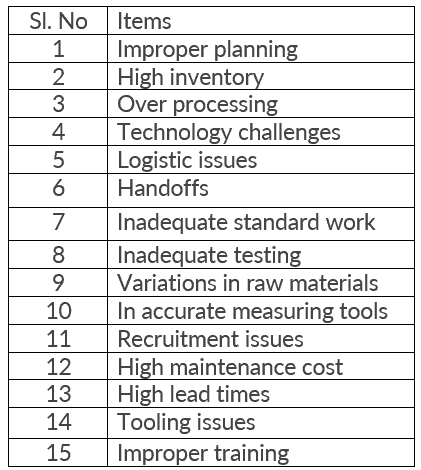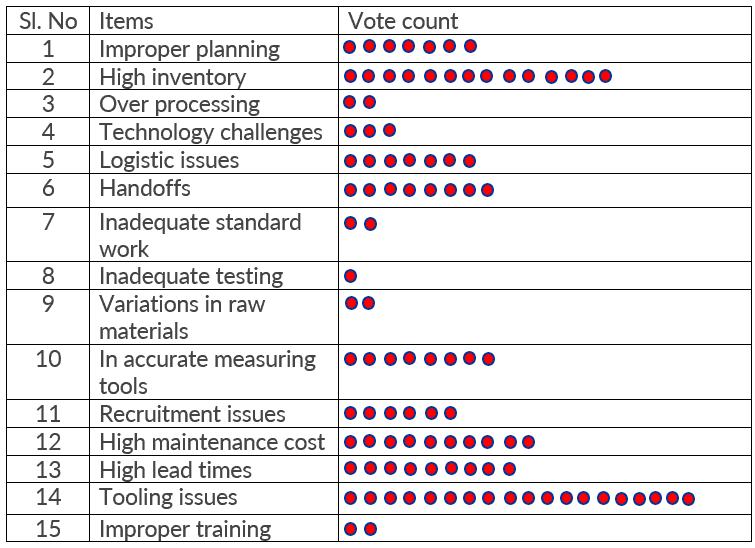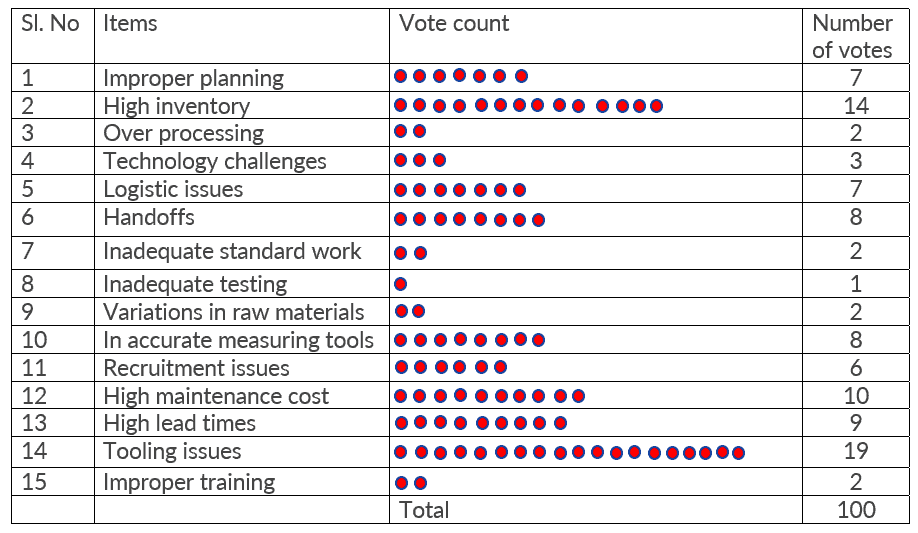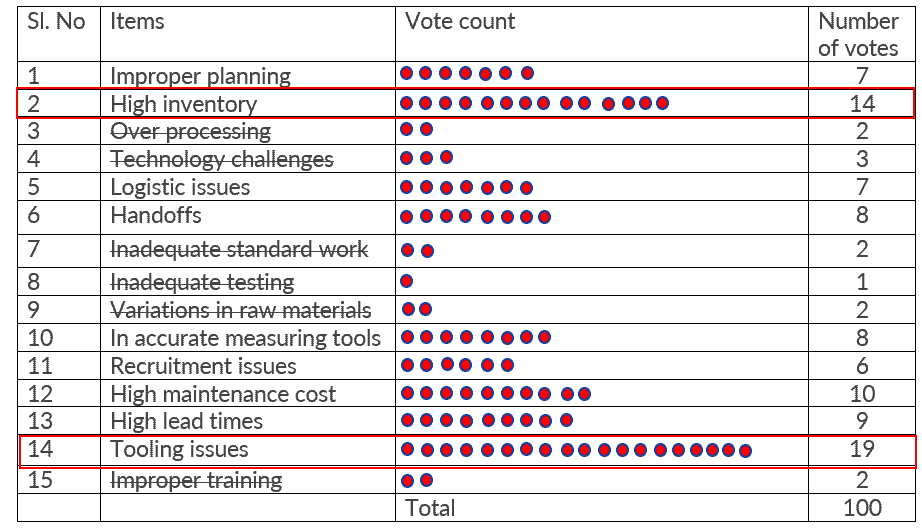Multivoting is a technique that allows a team to vote on a long list of ideas into a manageable number of best options or top priorities. In other words, Multivoting is a way for a group to narrow a list of choices down to a manageable few. While multivoting is NOT a decision-making tool, it is a great way to achieve consensus on an option that the group most favors. Generally, it follows the brainstorming technique.
The team’s brainstorming session can generate a list of ideas. Having a list does not translate to action. Hence, Multivoting is preferred as it allows an idea to be favored by most team members or participants.
Why Multivoting?
Multivoting helps teams to focus on problem-solving opportunities and efficiently identify high-impact items. Furthermore, multivoting is a valuable consensus-driving tool as each member of the voting team has a voice, and the process reduces the list of options to a manageable portion. Particularly this method allows each individual in the team to participate actively in the decision-making process. Voting can be conducted by a show of hands as each item is announced; otherwise, participants can stick the adhesive dots next to each item on the flipchart. Usually, items receiving fewer votes, say 0-4, might be ignored.
Benefits
There are several benefits to using the multivoting technique:
- Each individual participates in the decision-making process.
- Simple and straightforward process.
- It is easy and quick to implement.
- A simple technique to choose the most significant or highest priority item from a list.
- Opportunity to discuss the pros and cons of the project.
- Creates commitment to the team’s decision.
When to use it
Often, there are too many lists of items for a team to work on simultaneously. Apply Multivoting when the group has a lengthy list of possibilities and wants to specify it in a small list for later analysis and discussion. It is applied after brainstorming for the purpose of selecting ideas.
How to Use it
- List all possible choices the team must decide from and eliminate any duplicate that exists. Use the Affinity diagram to manage a large number of ideas and to spot duplicates.
- Assign numbers to all ideas for recordkeeping
- Decide how many votes each teammate will have
- Participants normally have several choices equal to one-third of the listed items. Take the total number of ideas or items and divide by 3. This gives you the number of votes (v) each person gets.
- Ex. 12 items / 3 = 4 votes for each person
- Each person has those number of votes to place on any of the options.
- Allow participants to choose several items that they feel are most important.
- A team member may put all of their votes on one topic or distribute them as they see fit.
- Ex. Mary puts 2 votes into option A, 1 vote on option B, and 1 vote on option C. At the same time, Bob puts all 4 votes on option C.
- Tally the votes and also record the totals next to each idea
- The option with the most votes is the group’s most preferred and eliminates those items with the fewest votes.
Multivoting Example
Example: XYZ organization listing the potential quality improvement opportunities from the brainstorming session. A 20-member team actively participated in the voting. Small circle symbols indicate the votes for each item received during the multivoting exercise.
- List all of the possible choices and assign numbers to all ideas

- Decide how many votes each teammate will have: 15 items / 3 = 5 votes for each person
- There are 20 members in the team, and each person will get 5 votes to place on any of the options. So 20*5=Total 100 votes
- A team member may put all of their votes on one topic or distribute them as they see fit
- Small circle symbols indicate the votes for each item received during the multivoting exercise

- Tally the votes and record the totals next to each idea

- The option with the most votes is the most preferred by the group and also eliminates those items with the fewest votes (say 0-4 votes).



Comments (4)
What about this:
https://asq.org/quality-resources/decision-making-tools
Hi Adrian,
I appreciate the link. What is your question? I’m not sure what you’re asking.
Best, Ted.
So which one is it?
a) While multivoting is NOT a decision-making tool,[…]
b) Furthermore, multivoting is valuable decision-making tool…
Great catch, Wiebke!
it is NOT a decision making tool, it IS a consensus-driving tool.
Updated text. Thank you for bringing this to my attention!